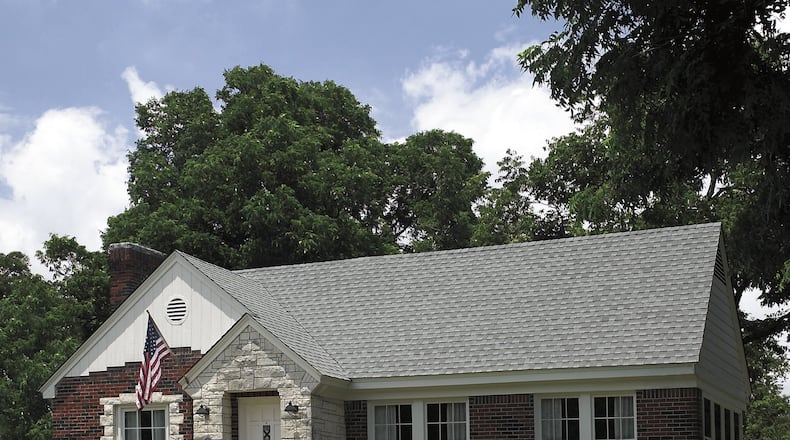Atlanta’s intense weather, ranging from scorching heat to hail-laden thunderstorms, can take a toll on a home’s exterior. Perhaps no other element takes the brunt like the roof, one of the most expensive and important components of a comfortable structure. Yet it’s not always first on homeowners’ minds.
“A roof is a long-term commitment, so you want to get something that suits your house and complements it to increase curb appeal,” said Leslie Franklin, executive director of residential marketing for GAF, a New Jersey-based company and leader in roofing solutions for 130 years. “Yet contractors tell us all the time that the roof is the last thing people decide on.”
And deciding can be a multi-faceted process. Contemporary roofing materials offer a range of options that go well beyond merely choosing a shade of black, gray or brown.
“Color preferences vary by the style of the shingle and the area of the country, but neutral shades are always popular because they’re safe,” said Franklin. “The grays, charcoals and weathered woods are some of the more subdued shades.”
But there are other options, from blue and beige to terra cotta. “We’re doing a lot with color, and it’s becoming more important,” said Franklin. “People are willing to personalize their homes, and color is a way to put their character and personality on the outside of the house as well. We’re finding more people are not afraid to try new and different colors.”
Selecting the roofing material is another consideration. Tile and metal are possibilities, but the runaway favorite is the architectural shingle composed of laminated layers that give roofs that textured, extra-dimensional design. Variations in colors on each shingle can create an additional visual layer, and new styles can mimic the look of cedar shake or slate. And they’re popular not only for the way they look, but for their durability as well.
“There are a lot of variables around how long a roof can last,” said Franklin. “How it’s maintained and where it’s located are important. But our shingles are warrantied for a very long time so most people don’t have to replace them. In fact, most people may only ever replace a roof once since the shingles are manufactured to last.”
Significant advances in shingle composition have made roofs an important part of a home’s energy-efficient plan. Houses subjected to considerable heat can benefit from reflective shingles that deflect more sun rays than they absorb. They’re usually available in light colors, but Franklin said GAF has also formulated several darker shades that many homeowners prefer. A variation of that idea is GAF’s “Cool Series” shingle that works to decrease the heat at the top of the house.
“These options may help reduce energy costs,” said Franklin. “There are parts of the country, like the Southeast, that do get hot, but adequate attic ventilation and cool roofing can help a lot. We’ve developed a neat tool at coolhomes.gaf.com that lets you put in your ZIP code and what your current roof looks like – asphalt shingle or tile and color – then you click on a GAF option, and it calculates possible energy savings.”
The Southeast also has a preponderance of storms that pelt rooftops with damaging hail. Shingles designed to be impact resistant can add another layer of protection to ward off costly repairs or replacements.
Selecting the roof isn’t a quick decision, especially when the options are as varied as the buyers.
“We know that one size doesn’t fit all,” said Franklin. “We’re trying to provide enough depth in our offerings to have something for everybody.”
Signs it’s time to call a roofer
- Water leaking into the house
- Blistering paint
- Ceiling stains, mold or mildew
- Decaying exterior walls or siding
- Missing, cracked or curled shingles
- Shingles that appear dirty
- Excessively high energy bills
Source: gaf.com.
About the Author
The Latest
Featured

